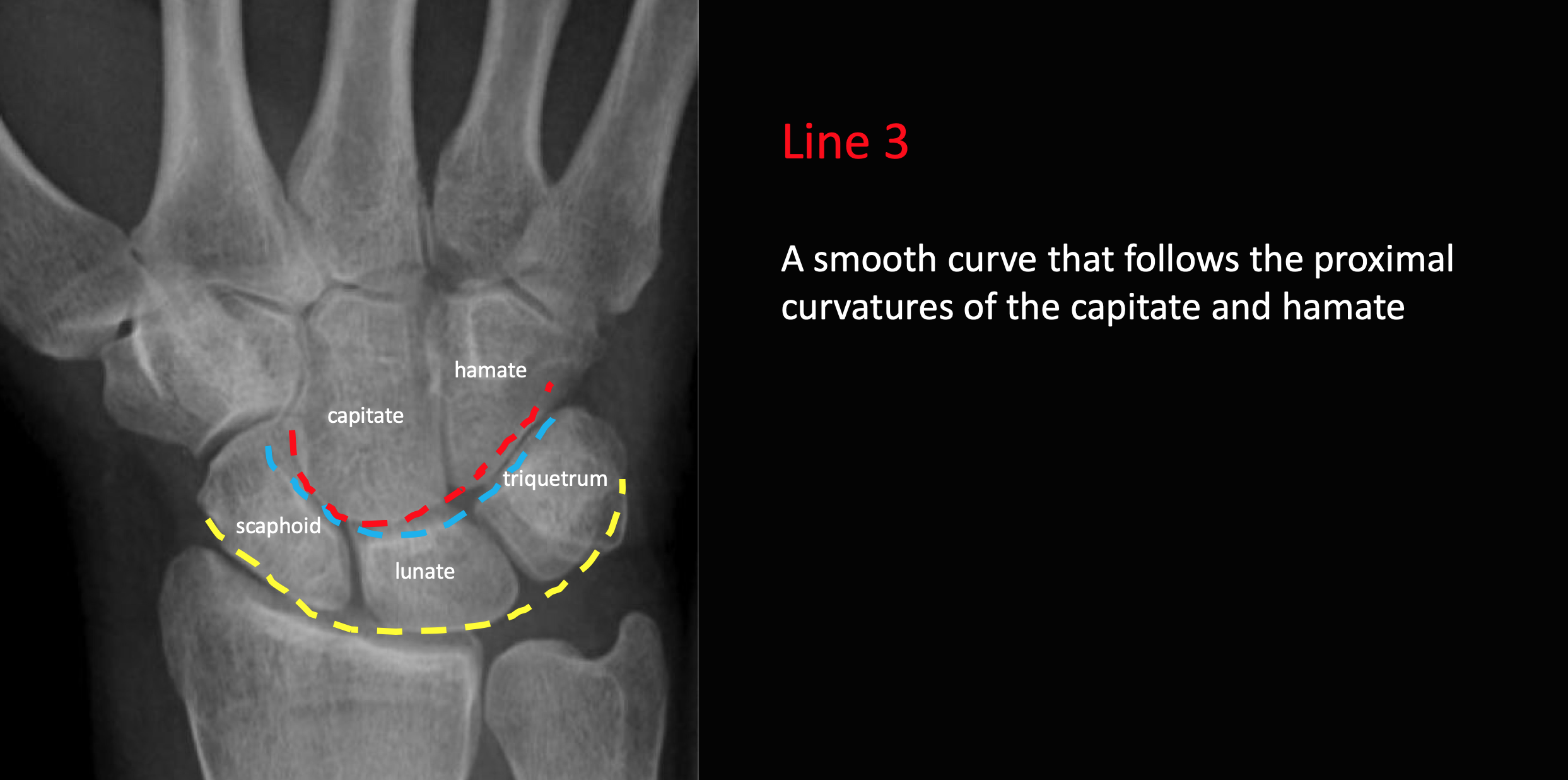Gilula’s carpal arcs are used to determine carpal alignment. They can assist in identifying ligamentous injury, dislocations and fractures of the carpus on X-ray. They are of used in the sometimes difficult to interpret x-rays of the carpal bones. As we will see below, the carpal arcs act similarly to the raised fat pad sign(sail sign) in the elbow x-ray, which can indicate an occult fracture. Even when we aren’t sure of where the injury is, disrupted arcs will tell us that there is an underlying injury.
There are three carpal arcs that follow the smooth curvatures of the carpal bones. These need to be both smooth and continuous as seen below:
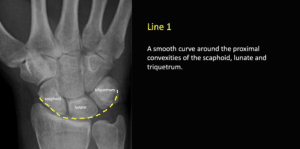
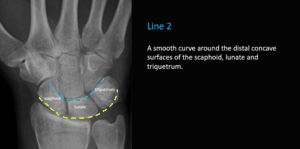
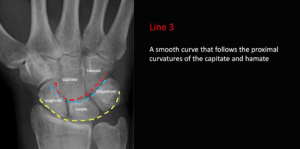
Gilula’s three carpal arcs are smooth in curvature, due to the smooth rounded edges of the carpal bones. They define the carpal bones. A disruption of the arc indicates a ligamentous injury or fracture at that point. They are shown above:
- First arc: a smooth curve around the proximal convexities of the scaphoid, lunate and triquetrum
- Second arc: a smooth curve around the distal concave surfaces of the scaphoid, lunate and triquetrum
- Third arc: A smooth curve that follows the main proximal curvatures of the capitate and hamate
Below is an example of disrupted arcs:
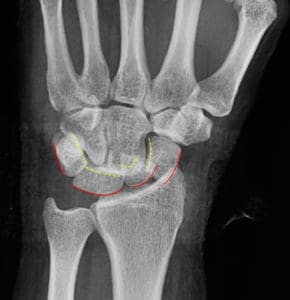
Case courtesy of Dr Benoudina Samir, Radiopaedia.org. From the case rID: 40715
Case
A patient presents following a fall and injury to the wrist. The wrist is swollen and painful and cannot be moved. The limb is neurovascularly intact. X-rays are done:
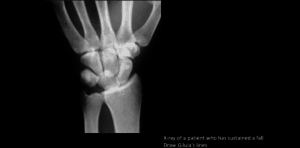
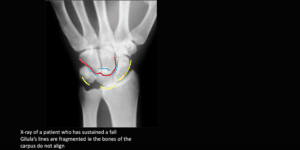
The disrupted arcs, tell us that these carpal bones are not normally aligned. The lateral x-ray gives the diagnosis, as shown below.
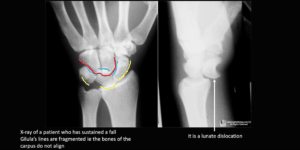
Using the three carpal arcs, can help to identify an abnormality, even when we aren’t sure of where it might be on the x-ray.
References
- Peh WC et al. Disruption of carpal arcs.J Hand Surg Am. 1996 Jul;21(4):561-6.
- Reisler T et al. Interesting Case Series:Perilunate Dislocation. Eplasty. 15. ic9.
Peter Kas

